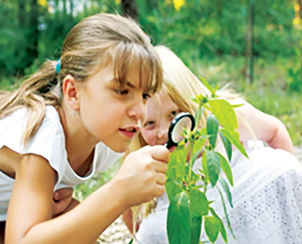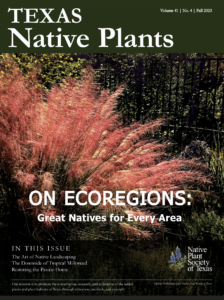
By Sharon Van Buskirk, Dallas Chapter
In the nearly four years since we organized the Friends of the Warren Ferris Cemetery in Dallas, we have seen our efforts to reclaim this pre-Civil War cemetery branch out to reach all kinds of people, firing up their interests in flora, fauna, education, history, science, art, and storytelling.
With the simple, albeit labor-intensive, act of ridding the cemetery grounds of invasive plant species, we embarked on a learn-as-you go lesson of discovery. More appropriate and sustainable plants were introduced. In time, not only did these “new kids on the block” take root, but we found that other species that had been suppressed were now stepping out of the shadows. A few examples include Cherry Laurels (Prunus caroliniana “Compacta”), Evergreen Sumac (Rhus virens), and Dwarf Palmetto (Sabal minor).
As the land was reverting to a more natural landscape, we saw an opportunity to enhance the discovery experience for wider audiences. We are instigating self-guided tours using QR-coded signage that can be easily updated as our recovery and reclamation efforts continue.
In further outreach, we have created and promoted our Constellation of Memories program. With template in hand, we are sharing: how to organize and bring this renewal to fruition. Our vision is to have a network of once-abandoned cemeteries brought back to life as living, breathing green oases, for all the community to enjoy. The reintroduction of native plants in these spaces, whether urban or rural, is a reclamation for future generations and a testimony to the people who have gone before us.
If you are in the Dallas area, drop by and see our little oasis for yourself. You can also keep up with us by visiting our website whenever the fancy strikes!
To get in touch with Friends of the Warren Ferris Cemetery, please email julie@julieannfineman.com.
Did you like this article? It’s from our Fall 2023 Texas Native Plants magazine. Read more here

